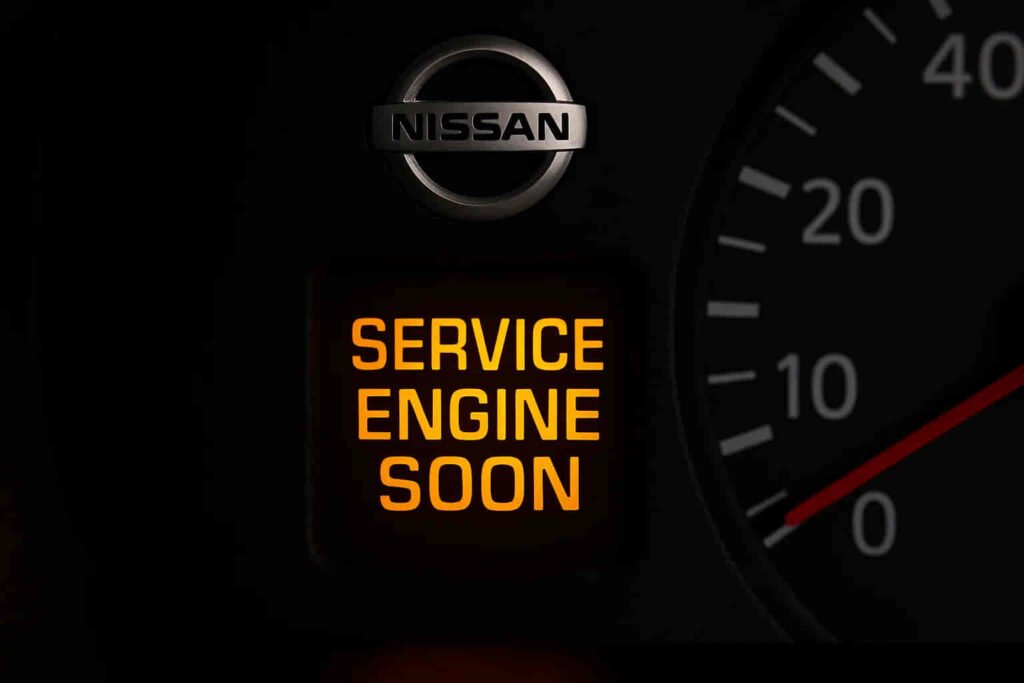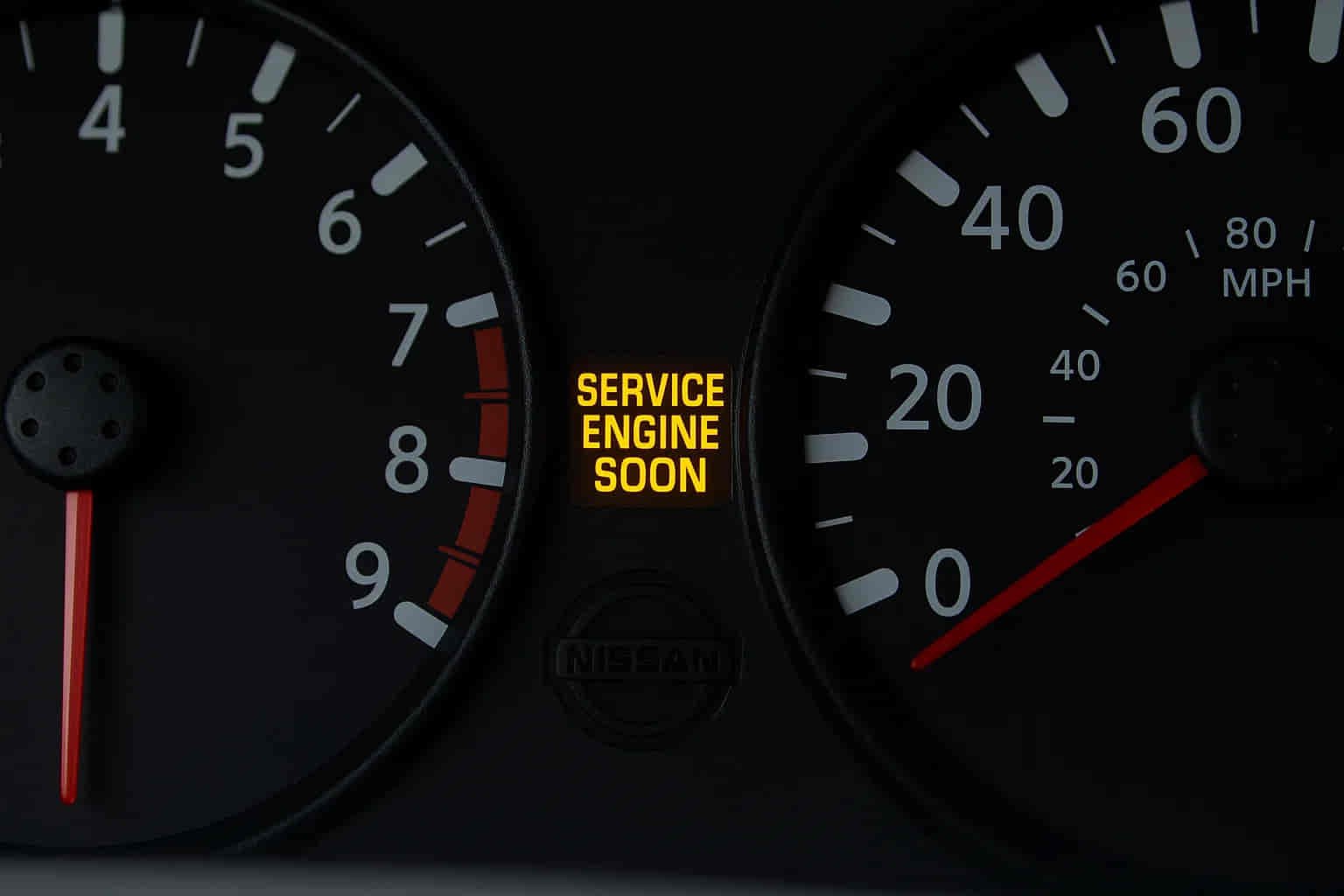When the Nissan Service Engine Soon light suddenly glows on your dashboard, but your car still feels perfectly normal, it creates a quiet wave of confusion. Most drivers hesitate—should they rush to a mechanic or simply keep driving? This moment of uncertainty is one of the most common experiences among Nissan owners, and it often hides simple explanations beneath the surface. The light doesn’t always mean a mechanical failure; instead, it’s the car’s way of saying, “Something needs attention soon.” From a loose fuel cap to a small emission irregularity detected by the onboard OBD system, the signal is often a request for routine care rather than an emergency. Yet ignoring it for too long can turn a minor issue into an expensive repair. In this guide, we’ll explore why the Nissan Service Engine Soon light may appear even when your vehicle runs smoothly, how to interpret its message accurately, and the smart steps to protect both your engine health and your wallet—without unnecessary panic or costly mistakes.
What Does “Service Engine Soon” Mean on a Nissan?
The phrase “Service Engine Soon” on a Nissan dashboard is not just a random warning—it’s the car’s internal communication system speaking directly to the driver. Unlike the red, urgent “Check Engine” indicator, this yellow or amber light is designed to alert you before a minor issue becomes a major one. It connects to the vehicle’s OBD-II diagnostic network, a sophisticated electronic system that continuously monitors sensors across the engine, fuel, and emission components. When even a small deviation from normal parameters is detected—such as a misfire, slightly rich fuel mixture, or inefficient catalytic conversion—the ECU triggers the Nissan Service Engine Soon light to notify you that the car needs attention soon, not immediately.
In essence, this warning is a preventive signal, a soft reminder that the vehicle’s self-diagnostic system has found something outside its optimal range. Sometimes it can be as trivial as a loose gas cap causing a vapor leak; other times, it points toward early signs of sensor wear or a scheduled maintenance interval. Understanding this subtle difference is crucial because reacting calmly and logically to the Nissan Service Engine Soon alert often saves both time and unnecessary repair costs. It’s not a call for panic—it’s your car’s way of asking for care before things get worse.
Common Reasons Why the Light Comes On While the Car Runs Fine
It’s one of the most puzzling moments for Nissan drivers: the Nissan Service Engine Soon light suddenly appears, yet the car continues to run smoothly, as if nothing is wrong. This paradox happens because modern vehicles are built with hyper-sensitive diagnostic systems that detect even the smallest inconsistencies long before they affect performance. The OBD-II network inside your Nissan constantly analyzes data from dozens of sensors—measuring air intake, exhaust composition, fuel mixture, ignition timing, and temperature variations. When any reading drifts beyond its expected tolerance, even slightly, the ECU logs a fault and activates the warning light.
One of the most frequent culprits is a loose or damaged gas cap. It might seem trivial, but when vapors escape from the fuel tank, the evaporative emission system interprets it as a leak, triggering the alert. Another subtle cause can be an aging oxygen sensor that starts to misread exhaust gases, making the engine run a little too rich or lean without any noticeable loss of power. Sometimes, a mild fuel injector clog or dirty air filter creates a temporary imbalance that the system records as a warning. Even software irregularities—small inconsistencies in ECU calibration—can cause the Nissan Service Engine Soon message to appear after routine maintenance or voltage fluctuations.
In all these cases, the car feels normal because its core functions are still intact. The warning simply means that the system has noticed deviations early enough for you to act preventively. Ignoring these soft signals may not cause immediate breakdowns, but over time, they can increase fuel consumption, affect emissions, and gradually wear out vital components. The Nissan Service Engine Soon light, therefore, should be seen not as an annoyance, but as a proactive safety feature—your car’s early whisper before it ever needs to scream.
How to Diagnose the Issue Safely

Diagnosing the cause behind a Nissan Service Engine Soon light doesn’t require panic or guesswork—it requires method. The most effective approach begins with observation. Before reaching for tools, drivers should take a moment to recall recent changes: a gas refill, a battery replacement, or even an oil change. Many warnings appear after such minor interventions because the vehicle’s electronic control unit, or ECU, detects small inconsistencies during recalibration.
The next step is connecting an OBD-II scanner, a small diagnostic device that communicates directly with the car’s onboard system. Every Nissan model—from the Altima to the Rogue—stores fault data as Diagnostic Trouble Codes (DTCs). When the scanner retrieves these codes, they reveal which subsystem triggered the warning. For example, a P0420 code may indicate catalytic converter efficiency issues, while a P0171 points to a lean fuel mixture. These codes don’t always mean parts are failing; often, they highlight early irregularities that can be fixed with cleaning or recalibration rather than replacement.
However, the key to safe diagnosis is understanding what not to do. Clearing codes without addressing the underlying cause might turn off the light temporarily but leaves the root problem unresolved, which can worsen over time. The right approach combines calm analysis with small, informed actions—tightening a fuel cap, cleaning sensors, or scheduling a professional diagnostic if the light persists. By approaching the Nissan Service Engine Soon alert as a conversation rather than a crisis, you ensure your vehicle remains efficient, compliant with emission standards, and mechanically healthy.
What to Do Next: Fixes & Smart Maintenance Tips
Once the Nissan Service Engine Soon light comes on, the best response is not to rush into replacement or repair—it’s to interpret what your vehicle is trying to communicate. Every alert has context. If the light appeared shortly after refueling, the fix might be as simple as tightening or replacing the gas cap, then allowing a few drive cycles for the ECU to recheck pressure integrity. When a diagnostic scan reveals minor fuel-trim deviations or low-level sensor alerts, these can often be resolved through preventive maintenance: cleaning the mass airflow sensor, replacing an aging oxygen sensor, or refreshing the air and fuel filters to restore precise readings.
For more persistent cases, taking your Nissan to a qualified technician is the wisest move. Modern diagnostic tools can read live data streams from your car’s ECU, allowing professionals to identify small anomalies invisible to the driver. Addressing these issues early is far cheaper than waiting for the light to escalate into a full “Check Engine” event. Data from dealership records show that over 70% of Service Engine Soon cases are caused by minor, non-critical conditions that can be resolved in under an hour of labor.
Smart maintenance is about timing, not panic. Regular oil changes, proper fueling habits, and periodic sensor checks keep the warning light off and the engine running efficiently. By treating the Nissan Service Engine Soon signal as a partner in vehicle health rather than a threat, drivers save money, reduce emissions, and extend their car’s longevity—all through informed action rather than guesswork.
Preventive Habits to Avoid Future Warnings
The easiest way to keep the Nissan Service Engine Soon light from returning is not through luck, but through consistency. Every modern Nissan is built on a delicate balance between mechanical performance and electronic precision, and small habits can make a significant difference. Regular oil changes, timely replacement of air and fuel filters, and keeping the throttle body clean allow the ECU to operate with accurate data. When sensors receive consistent readings, the system remains calm—and the dashboard stays quiet.
Using high-quality fuel also helps prevent false triggers. Poor combustion from contaminated gasoline can confuse oxygen sensors, leading the ECU to think something is wrong. Likewise, maintaining steady driving patterns and avoiding short, stop-and-go trips helps the emission system reach optimal temperature, where it can burn residues effectively. Drivers who keep their maintenance schedule synced with mileage rather than waiting for warning lights rarely face unexpected alerts.
Preventive care is not about perfection—it’s about attention. When the car runs smoothly and its internal diagnostics confirm stability, the Nissan Service Engine Soon light has no reason to appear. Over time, these small, mindful habits build a form of mechanical trust between driver and machine, transforming what was once a source of anxiety into a quiet assurance that the vehicle is being cared for as it was engineered to be.
Conclusion
When the Nissan Service Engine Soon light appears, it’s not a sign of failure—it’s a signal of awareness. Your car is designed to communicate long before something truly breaks, offering you time to act intelligently rather than react in fear. Understanding what this warning means, how it connects to the vehicle’s internal diagnostic logic, and how to respond calmly transforms routine maintenance into proactive care.
Drivers who take this message seriously—without panic—often discover that most issues behind the light are simple, inexpensive, and preventable. The real value lies not in ignoring the signal but in listening to it early. By using tools like OBD-II scanners, following maintenance schedules, and paying attention to small changes in performance, you build a stronger, more reliable relationship with your Nissan.
So the next time that amber glow returns to your dashboard, remember: the Nissan Service Engine Soon light isn’t there to ruin your day—it’s there to protect your engine, your wallet, and your peace of mind. Stay attentive, drive smart, and let your car’s quiet warnings guide you toward years of dependable performance.

